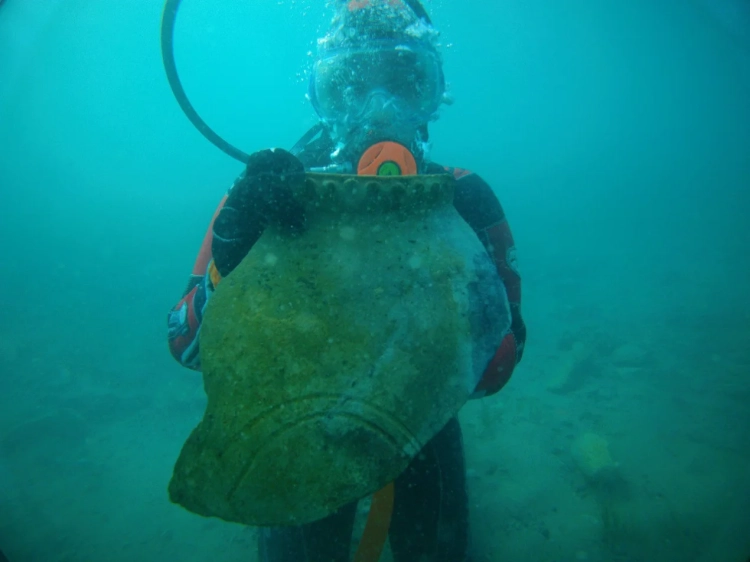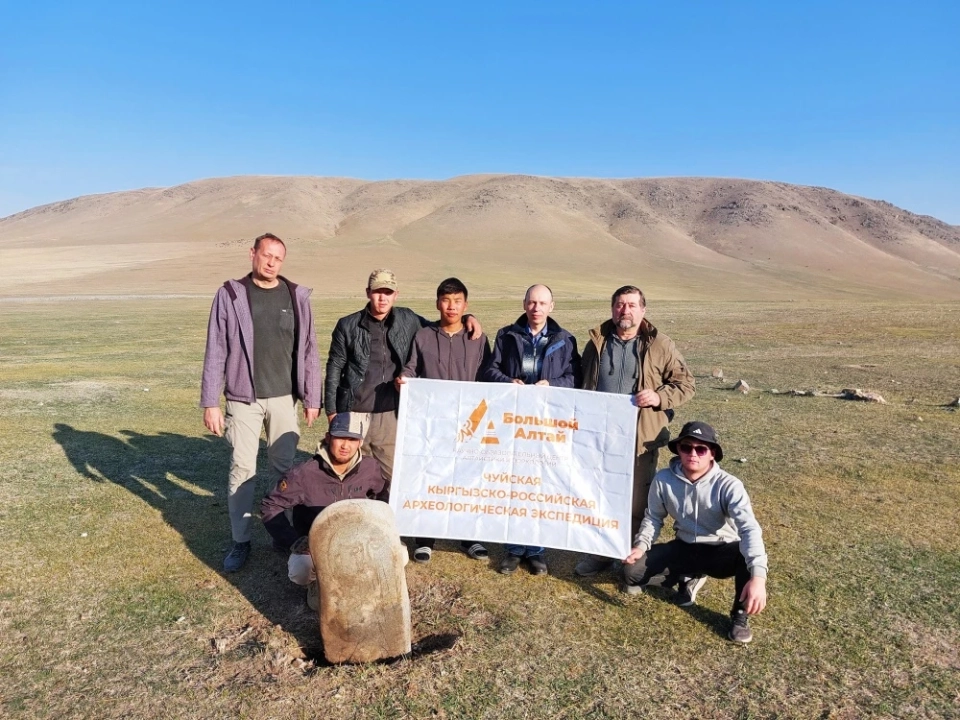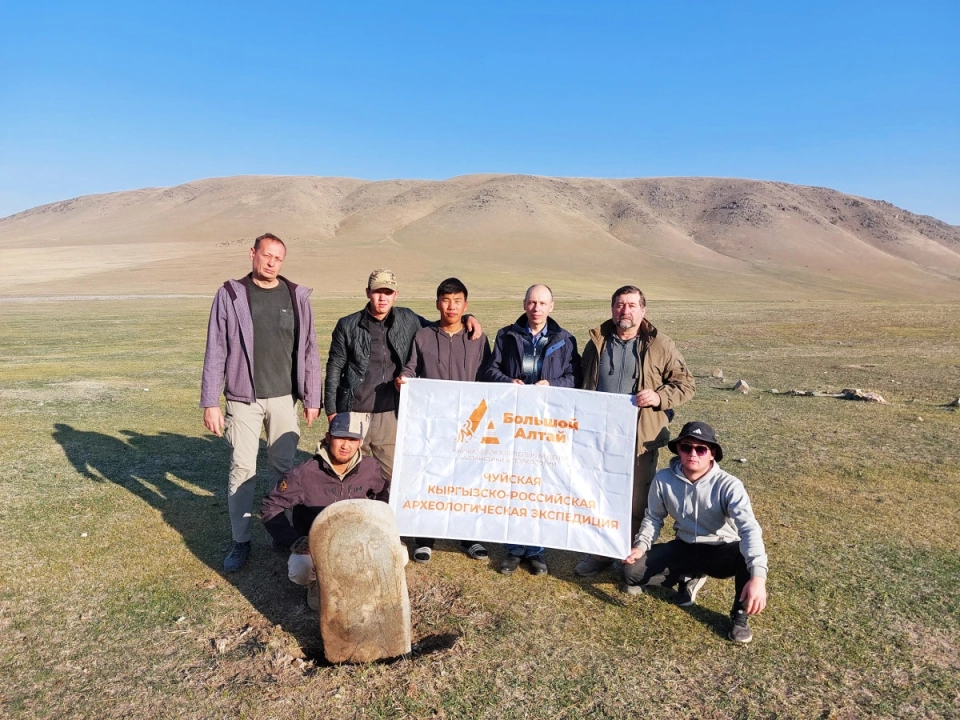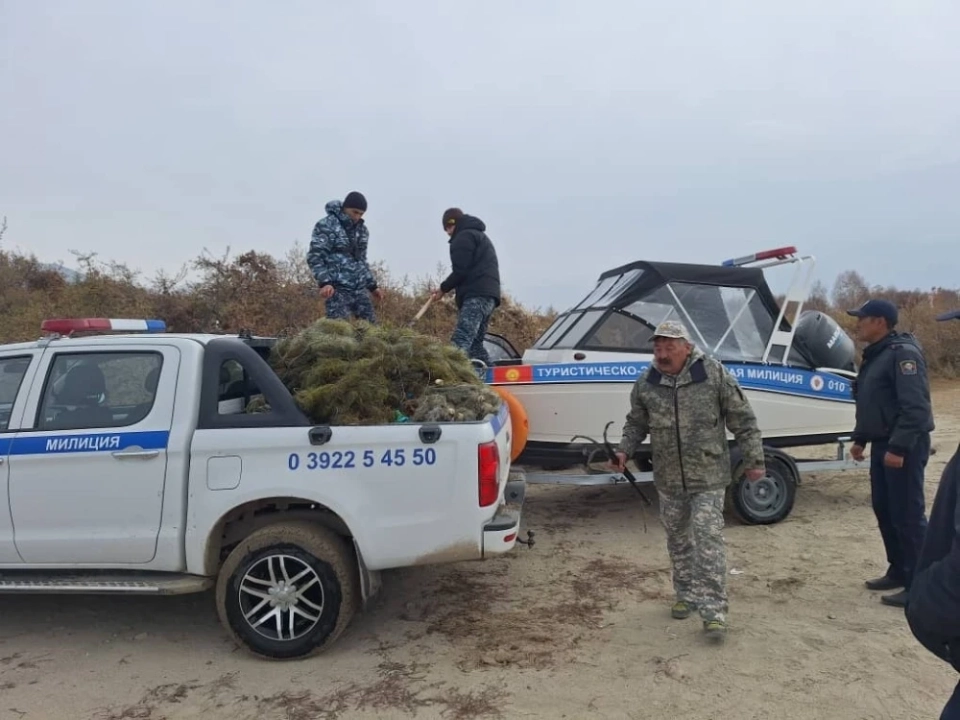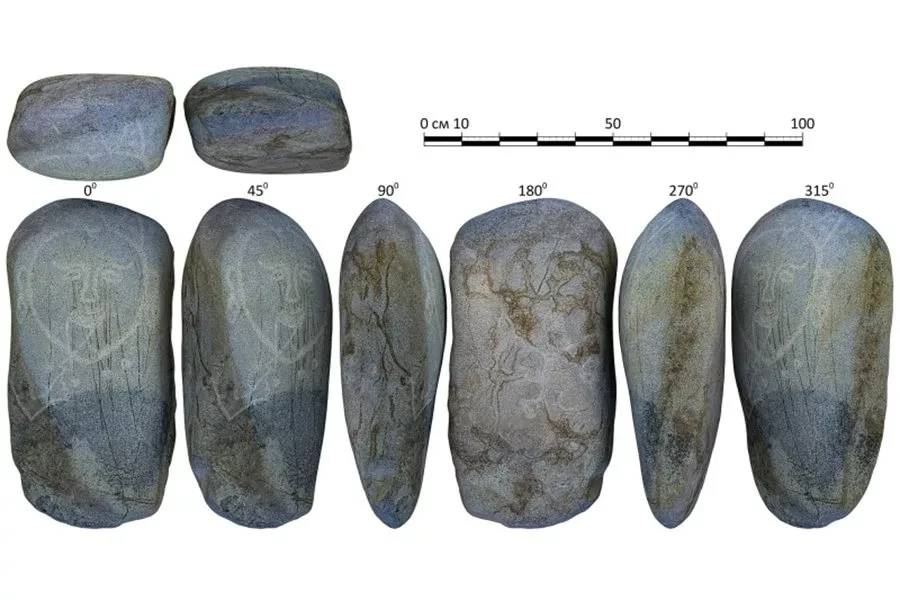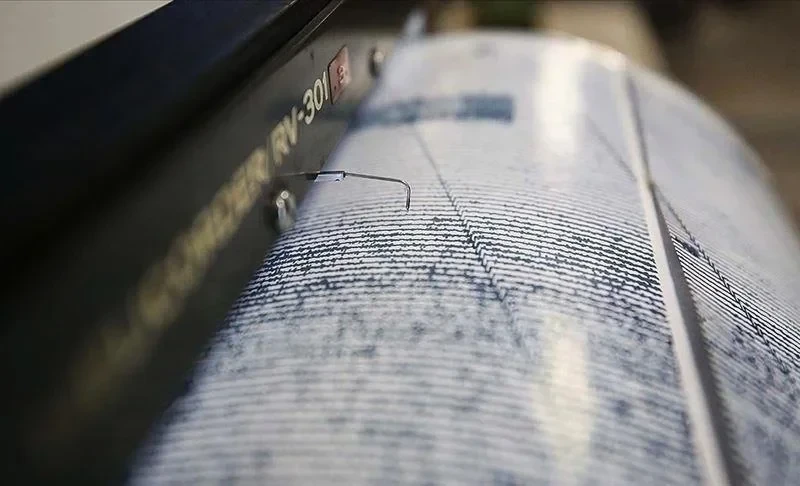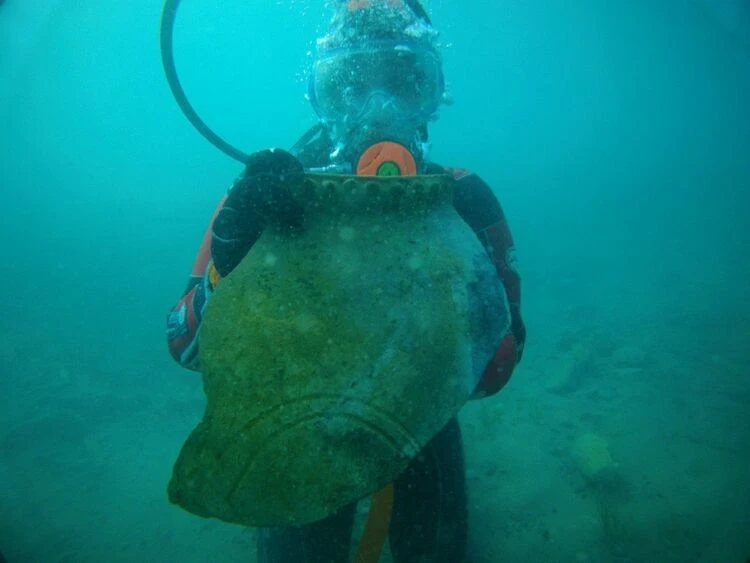
In the autumn months of 2025, an international underwater archaeological expedition took place on the northwestern shore of Lake Issyk-Kul. The event was organized by the Russian Geographical Society (RGO), the Institute of Archaeology of the Russian Academy of Sciences, and the Institute of History, Archaeology, and Ethnology of the National Academy of Sciences of Kyrgyzstan. This was reported by asia24.media with reference to rgo.ru.
Researchers focused on the submerged complex of Toru-Aygyr, which played an important role in trade and the movement of merchants along the Silk Road. During the excavations, fragments of a medieval cemetery, large ceramic items, and construction elements made of fired brick were discovered, indicating the existence of an ancient city.
Archaeologists surveyed four sites at depths ranging from one to four meters. At the first site, the remains of destroyed buildings made of fired brick were found, among which was a stone millstone for processing grain. An architectural element was also recorded, indicating the presence of a social building, possibly a mosque or madrasah. Around the remains, there are piles of stone and wooden structures. Samples were sent for dendrochronological analysis and AMS dating to determine their age.
This monument can be considered as a city or a significant trading center on an important section of the Silk Road. In the early 15th century, a strong earthquake led to the flooding of the city. Scientists suggest that by the time of the catastrophe, the inhabitants had already left their homes, and this event is reminiscent of the history of Pompeii. After that, the region became inhabited by nomadic tribes, and the entire developed medieval civilization disappeared.
At the second site, archaeologists discovered a Muslim necropolis of the 13th-14th centuries, which was partially eroded by water. On an area of 300 by 200 meters, burials following Islamic rites were found: the skeletons are oriented towards the sacred Kaaba in Mecca. Among the finds were the remains of a man and a woman, which will be further studied by anthropologists.
At the third site, located south of the main complex, samples of medieval ceramics were found, including an intact vessel (khum). However, this season it was not possible to raise it, as the artifact was firmly stuck in the ground.
Using modern technologies and underwater drones, specialists were able to accurately document all findings and create a database for further monitoring of the monument's condition. The expedition is conducted in collaboration with the National Academy of Sciences of the Kyrgyz Republic, and its results will form the basis for future scientific publications and research aimed at preserving the underwater heritage of Issyk-Kul.

